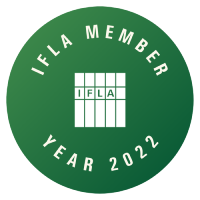This work is licensed under CC BY-NC 4.0
Copyright is a set of unique legal rights granted to the author or creator of an original work, which includes the right to copy, distribute, adapt, perform, and display the work publicly. The work does not need to be unique. Copyrights grants exclusive and assignable legal right, to the originator for a fixed number of years, to print, publish, perform, film, or record literary, artistic, or musical material (Reese,2017). Furthermore, copyrights is a type of intellectual property that protects original works of authorship as soon as an author fixes the work in a tangible form of expression. The copyright owner has the right to reproduce, print, and share their work. Anyone who wishes to reproduce the work in this manner must seek permission from the owner. As soon as a work is created, its author or creator is automatically granted copyright.
Take a look at the following YouTube video which looks at Understanding Copyright, Public Domain, and Fair Use
Take a look at the following infographics by Copyright and Creativity & Rights Direct that explores a general over view about copyright. Additionally, download both infographics below.


Copyright applies to any medium whereby work exists, including the Internet. Unlike most other intellectual property rights, copyright does not have to be registered. It is an automatic right once your work that has been 'fixed'.
To apply for a trademark in South Africa click on the link
To apply for a patent in South Africa follow the link
How long does copyright last?
This is dependent on the kind of work that was created. In general, the duration of a copyright is 50 years, subject to the following:
Literary, Musical or Creative Works
Published Editions
Sound Recordings
Films and Photographs
The following table below provides a brief overview of general terminology.
|
Copyright Infringement |
The use or creation of content protected by a copyright without the owner's consent is known as copyright infringement. |
|
Copyright Notice |
It notifies the public that the work is protected by copyright. |
|
Creative Commons license |
Creative Commons licenses provide a standardized method for everyone, from large institutions to individual creators, to allow the public to use their creative work under copyright law. |
|
Derivative Work |
A work that is derived or based upon one or more previously published works is known as a derivative work. Translations, musical arrangements, film adaptations of plays or literary works, art reproductions, abbreviations, and condensations of previously published works are examples of common derivative works. |
|
Fair Use |
A party may use a work protected by copyright for fair use, which includes teaching, research, news reporting, commentary, and scholarly purposes, without the owner's consent. These goals do not represent what will always be regarded as fair use; rather, they only serve to highlight potential instances of fair use. |
|
Fixed |
A work is deemed fixed in the context of copyright law when it takes on a tangible, stable, and concrete form. A live reading of the same short story that is not being simultaneously recorded does not meet this requirement, whereas a printed version of the story does. |
|
Intellectual property |
Any intellectual creation, including creative and literary works, inventions, designs, names, symbols, images, computer code, etc., is referred to as intellectual property. |
|
Public Domain |
Creative materials that are not covered by intellectual property laws such as copyright, trademark, or patent. These works are owned by the public rather than an individual author or artist. |
|
Patent |
Patents protect new inventions, processes, and scientific creations. |
|
Trademark |
A trademark is registered for a name, logo, slogan, or phrase that is used to distinguish your product or service from competitors in the market. |
This section provides a link to the South African consolidated version of the Copyright Act 1978 which incorporates all the amendments up to 2008.
Click on the following icon below to gain access Copyright Act 98 of 1978 and the amendments up to 2008.
Click on the following link to gain access to the Intellectual Property Laws Amendment Act 38 of 1997
Browse through the following links to gain a deeper understanding of copyrights
 |
Law of intellectual property in South Africa This book deals with the core aspects of intellectual property law and covers developing aspects drawing attention internationally and locally. This work offers a systematic and comprehensive insight into all the mainstream aspects of intellectual property protection. Local and international instruments are examined and balanced against human rights in general and more specifically the rights enshrined in the South African Bill of Rights. |
 |
Dean & Dyer: Introduction to intellectual property law Introduction to Intellectual Property Law provides a thorough and accessible introduction to the full, broad spectrum of intellectual property law in South Africa. Authored as a collaboration between Spoor & Fisher, specialist intellectual property law attorneys, and the Anton Mostert Chair of Intellectual Property Law at the University of Stellenbosch, the text brings together the value of practical expertise with an enquiring, analytical and critical approach, resulting in a dynamic and indispensable reference. |
 |
A guide to intellectual property law A Guide to Intellectual Property Law covers the most common forms of intellectual property law, namely copyright, trademarks, patents and the delict of unfair competition. The book closely follows the relevant legislation and contains explanations of the most important South African cases. The book also introduces the relatively new IP subjects of the internet, biodiversity and traditional knowledge and also includes a chapter on international IP law, in which the main treaties are summarised.
|
 |
Copyright in cyberspace : questions and answers for librarians
|
 |

University of the Western Cape,
Robert Sobukwe Road,
Bellville,
7535
Tel: 021 959 2946
